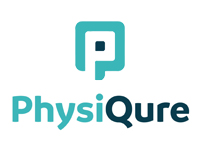Over the past decade, physiotherapy has advanced remarkably, and now can be performed on-line, allowing patients who would previously have been unable to get this therapy to reap the benefits. For those who are not familiar with the term, physiotherapy is described as a treatment that improves or prevents pain and disability.
Some of the treatments include manual resistance exercise, electrical stimulation, laser therapy, stretching, hydrotherapy, and massage. While all these therapies can be used to treat various conditions, in most instances, a patient is referred to a physiotherapist who has additional skills and experience in these areas.
Today, more people are able to realize the many benefits of physiotherapy, and many choose to pursue a career as a physiotherapist. The benefits of physiotherapy at home include fewer appointments with your primary care physician, less medication, and more control over your own life.
There are also many financial benefits, such as lower monthly medical insurance premiums. Many patients find that they make greater recoveries following physiotherapy at home than they did prior to their first visit. Many patients notice a reduction in pain and discomfort immediately following a session.
If you are interested in obtaining a physiotherapy degree, you should keep in mind that you will need to complete a residency in this field. Once you have completed your schooling, the benefits of physiotherapy at home become even more obvious. You will likely have to take further classes that focus on teaching you how to use physical techniques in the appropriate situations, as well as how to deal with emotional stress.
When you are performing these exercises and stretches, it is important to have the right equipment at hand. Using equipment that is not suitable can result in injury, as well as creating additional discomfort for the patient.
You may want to use a combination of therapeutic exercise, manual resistance training, stretching, massage, and hydrotherapy in order to obtain the maximum benefit for your condition. It is important to remember that using too much of any given technique can result in injury.
Using too little of a technique, on the other hand, can be counter-productive, resulting in fatigue or reduced performance. This is why you should always seek advice from an appropriate professional before beginning a course of treatment. You should also research the various types of equipment that are available on the market, including what is available as physiotherapy at home equipment.
Many individuals who have found the benefits of using physical therapy at home have found that they feel more confident about themselves after having had physiotherapy at home.
They are able to identify problems more easily and they no longer fear going to the doctor if they feel something is wrong. Furthermore, many patients have been able to reduce pain and discomfort through the use of a manual compression garment.
When you go to see a physical therapist, it is important to be open and honest with them about the type of pain that you are experiencing. The therapist can then identify the problem areas, work with you to improve movement and range of motion, teach you how to warm up and cool down and give you advice on nutrition and weight management.
It is important to make sure that you tell your physiotherapist everything you are doing at home when you are being treated. Doing so will ensure that you get the very best care possible and that you can begin to get back to daily living as soon as possible.
